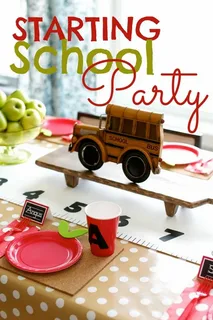Every great party begins with intention. Are you celebrating the end of the semester, a holiday, a reading goal, or just a fun mid-year morale boost? Clarifying what you want to achieve—joy, connection, reward—will shape everything that follows. Once you know the purpose, pick a theme that resonates with your students. A carnival, space adventure, tropical luau, or “superhero day” can frame your decor, activities, and even snacks.
The theme isn’t just for fun. It helps unify decisions—color schemes, playlists, crafts. While browsing for ideas, you might look at places that host school parties to see how immersive themes can come alive. Use that inspiration to fuel your own setup, not to replicate exactly—but to spark imagination. With purpose and theme set, the rest of the party comes into focus.
Organizing the Logistics for Success
Once your vision is clear, it’s time to lock in the nuts and bolts. Choose a date and time that fits your school’s schedule and most participants’ availability. Avoid conflicts with tests, big assignments, or other school events. Book your space early—gym, cafeteria, classroom, playground—and think through the flow: where will kids enter, where will food be, where will games happen?
Safety is nonnegotiable. Make sure there’s enough adult supervision. Be aware of allergy policies, emergency exits, clear walkways, and first aid access. For outdoor events, have a backup plan in case of bad weather. Communicate clear rules to students and chaperones: which areas are off limits, how to move between activity zones, and how to get help if something isn’t right. Good logistics make the party feel effortless to guests.
Planning Activities That Engage Everyone
Your party is only as magical as what the kids do. Choose activities that balance movement, creativity, and downtime. A few minutes of an energetic relay or dance break works well alongside a calmer craft station or photo booth. If your group is large and mixed ages, consider rotating stations so everyone moves through experiences at their own pace.
Avoid relying solely on passive entertainment like movies. Encourage interaction. For example: a “mystery box” game where students reach in and describe an object, a collaborative art wall, or simple STEM challenges (building towers, designing paper airplanes). Always have a few backup ideas in case an activity loses momentum. When the kids are moving, thinking, and laughing, you know you’ve hit the balance.
Preparing Food, Favors, and Final Details
Food can be a highlight—but make it simple, safe, and school-appropriate. Mini sandwiches, veggie sticks, fruit cups, and bite-sized treats work well. Be sure to label items, noting whether they contain common allergens like nuts or dairy. If students bring in snacks, a sign-up or list system helps prevent duplicates and manage dietary restrictions.
Favors and small takeaways can tie into your theme—stickers, custom bookmarks, or small stress balls. They’re tokens, not showstoppers. And don’t forget the little details: music playlists, themed signage, colorful balloons, and a guestbook or photo area. These touches make simple spaces feel celebratory and give students memory anchors to talk about.
Coordinating Communication and Volunteers
A successful party is often hidden behind clear communication and strong teamwork. Send home notices well in advance with date, drop-off/pick-up times, snack guidelines, and any costume or dress instructions. Use emails, newsletters, social media—anything that reaches families reliably.
Recruit enough volunteers: teachers, parents, older students. Give them roles—game monitor, snack overseer, cleaner, photographer—and walk them through the schedule ahead of time. The more prepared your team is, the smoother transitions will be. Behind the scenes, prepare emergency kits (bandages, wipes), charge devices for music or cameras, and double-check supplies the day before. The backstage prep ensures the front-of-house magic.
Turning Plans into Celebration
Planning school parties can feel overwhelming, but it becomes manageable when you work from vision outward: first purpose and theme, then logistics, activities, food, and communication. Each layer builds on the one before, creating an experience that feels cohesive and fun rather than chaotic.
Remember—your job is to set the stage so students can shine. When you prioritize safety, inclusion, clear roles, and thoughtful details, the rest follows. Whether it’s a holiday celebration, end-of-year bash, or surprise treat day, your care in planning matters. With the right prep, teachers and parents can turn a classroom or school into a place where laughter, connection, and joy take center stage.


